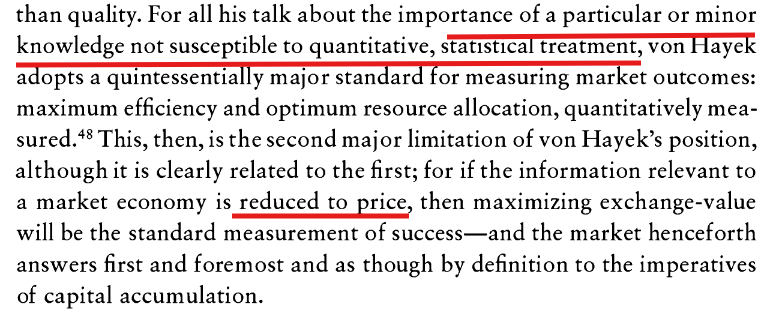-
Posts
2,264 -
Joined
-
Days Won
499
Everything posted by Kevin von Duuglas-Ittu
-
Gila Muay Thai May 8, 1975 quality jpegs of the edition from Sylvie's beginning collection, if anyone can translate (machine or otherwise), comments welcome on content. Insight into the era. You can follow this sub-forum and get email alerts for any new postings. If you share images from these captures please credit the Muay Thai Library Preserve The Legacy project and this forum. Any support for the project by subscription is seriously appreciated. You can comment on individual pages by using the Quote function, as a reply. front cover (Pudpadnoi, possibly winning the King's Fighter of the Year?) Inside there is photospread coverage of his 1975 win over Ruengsak on May 2nd.
-
escriures - etchings, strokes, inscriptions, grooves & sweeps, impressions, trace, arcings, adumbration, articulation. Above is a photo of a fighter from Chatchai's shadowboxing with his hands on the hip bones, the most extensive writing strokes taken out. The body itself becomes a gesture of gestures, the feet and torso moves toward the visual language, developing the sense of the roots of writing.
-
Violence and Muay Thai "violence does not participate in any order of reasons, nor any set of forces oriented towards results. It denatures, wrecks, and massacres that which it assaults. Violence does not transform what it assaults; rather, it takes away its form and meaning’" Think about this in terms of Thailand's Muay Thai and fighting. The purpose of the rite and practice is not to denature the other.
-
Notes on a Theory of Writing A theory of writing. Writing composed of strokes, escriures, lines passing through space. escriures in expressive, non-representational clusters. Asemantic gestures, intentions. This would make shadowboxing, poetry (in brief), and drawing (in sketch) a comparable, single thing. The ontology of a mark, a signature, a sign. A differential, as a presence. It has been said that violence is a form of writing, as it leaves a mark. This note reflecting back upon the one above it. Reading as a form of writing, as its the eyes that also make strokes, escriures. .
-
Jean-Luc Nancy (to turn to him again) gives what he claims to be an illustration of violence: the extraction of a screw with a pair of pliers rather than a screwdriver. How are we to understand violence from this example? Using pliers is not the proper way to extract a screw. It is the wrong way – the disorderly way – to do it. The screw is extracted, the goal is achieved, but the means are violent. - Violence, Image and Victim in Bataille, Agamben and Girard (16) On Muay Thai and Violence Lechte cites a very productive line of analysis of the ethical picture of Muay Thai, this is to say, a picture of Thailand's Muay Thai that assays its worth by what it says and does with violence. It's been my argument for some time that Thailand's Muay Thai has something to teach the Global West - perhaps the world - something significant about violence, and the agonistic affects of violence: anger, rage, pride, vengeance, frustration, etc, a large measure of this due to its cultural braiding with Buddhism. Here (Jean-Luc Nancy), such a picture. The use of the "wrong" tool produces violence in the (needless?) damage it does, its sheer ineffectiveness. It very well gets the job done, but brutishly. The screw itself suffers....and the pliers as well. We have a great deal of correspondence to this within the conceptual framework of Thailand's Muay Thai, at least in so far as it developed a femeu (artful) dimension. The femeu tool is the "right" tool, the tool for the moment. The technical elegance (and prowess) that articulates and imposes force or direction. We can see this. A femeu victory as such really in its acme ideal would do no damage. There would be pure submission (I've written about this), even without bending the will of the other. One thinks as well about the more brute versions of the sport that are rising up, many of them focused much more on "damage". Bonuses for damage, technique clusters meant only for damage. A thought process of damage. In this way we have left the land of the screw driver and its screw. At least in this sense, we have joined Thailand's Muay Thai to violence, rather than being an art of (about) violence. Violence, Image and Victim in Bataille, Agamben and Girard -- John Lechte.pdf
-
Agamben expansive on habit in his work on the poet Holderlin: Since the ‘original’ can only appear in a state of weakness, it can only be achieved through a round-trip journey that must first have ventured out into the foreign. One can only turn towards the origin—one returns to it without ever having been there before. The free use of the proper is the most difficult thing because what we are born with is not something that can be possessed once and for all, as a given; it can only be experienced as weakness and deprivation. It necessarily assumes the form of a habit, in the sense in which Aristotle defined it in a passage of Metaphysics that Hölderlin might well have known: as the hexis, from echein, ‘to have’—literally the act or state of ‘having’, just as from ‘to be’ the word ‘being’ was formed, or, to give an example from Latin, the verb esse (‘to be’) led to the analogical formation essentia (‘essence’ and also ‘being’). Aristotle used hexis first and foremost in relation to deprivation, as something that cannot under any circumstances be had (‘it is impossible to have a “having” [echein hexin] in this sense; for there will be an infinite series if we can have the having of what we have’— Metaphysics 1022b, 25). In other words, possession of one’s origin is possible only in the ‘habitual’ sense, and only through the dispossession of a habitation and a habit: it cannot be had, one can only become used to it, accustomed to it, habituated to it. To have a having is, in the final analysis, only a way or mode [modo] of being, a form of life. In an exemplary book on Indo-European languages, Émile Benveniste distinguished between two ways of forming nouns that indicate an action: on the one hand, nouns expressing an attitude or possibility (ending in - tu in Indo-Iranian, - tys in Greek, and - tus in Latin) and, on the other hand, nouns expressing a performed action (- ti in Indo-Iranian, - sis in Greek, - tio in Latin). Thus, in Latin actus means the state or manner in which someone or something moves or can move, actio the concrete action; ductus the manner in which something is or can be led, ductio the action of pulling or leading; gestus a way of behaving, gestio, the performance of an action. Similarly, the supine, which is formed by adding the - tu suffix, ‘expresses potential: cubitum ire, “to go to sleep”, does not indicate a concrete, completed action, but rather a possibility’. The Aristotelian distinction between potential or possibility (dynamis) and concrete act (energeia) is easy to recognize in these examples, but further elaborating on Benveniste’s considerations might help us gain a better understanding of the relationship between the two categories. Take the Latin term habitus, for instance: as a noun ending in - tus, it expresses an attitude or a possibility—or, more precisely, the way in which a power or possibility is had; not its objective exercise or concrete practice (which would be hexis in Greek; the Latin habitio developed relatively late). It becomes clear why Aristotle, who tried to think through his idea using the term hexis (which, as a noun ending in - sis, expresses a performed action) as a middle ground between mere potential and concrete act, encountered a challenge that proved quite difficult to overcome. Potential, expressed in the way language presents it, isn’t something not real that precedes the act in which it is realized: it is, on the contrary, the only way in which we can have what we do. That is, we can ‘have’ actions insofar as we consider them real possibilities for us: the moment they are performed, these actions become so separated from their subjects that they must be ascribed or attributed (to their actors, or the people who carry them out—hence the notion of guilt, upon which both law and tragedy are based). Custom or habit [l’abito o l’abitudine]—the inhabiting, dwelling life we are attempting to define—neutralize the dynamis/energeia opposition, rendering it inoperative. In keeping with a Hölderlinian penchant which should be familiar by now, they consider opposites in their inseparable coinciding. In 1838, when Hölderlin was still living in his tower on the Neckar, the French philosopher Félix Ravaisson, who had studied with Schelling in Munich, wrote a treatise titled De l’habitude (Of Habit). In dizzying pages that gained the admiration of Bergson and Heidegger, 25-year-old Ravaisson approaches habit as one of life’s ultimate secrets. He describes with meticulous precision the ways in which habit almost imperceptibly causes one’s will to morph into inclination and instinct, in a progressive degradation of effort and intention that, just as in Hölderlin’s work, is both passive and active: ‘The law of habit can be explained only by the development of a Spontaneity that is at once active and passive, equally opposed to mechanical Fatality and to reflective Freedom.’ In the case of conscious reflection and will, which we generally consider higher-level human functions, the end is an idea that does not yet exist and must therefore be brought about through action or movement; in the case of habit, however, the end is confused with the very action or movement that would bring it about, hence the subject and object become indeterminate: The interval that the understanding represents between the movement and its goal gradually diminishes; the distinction is effaced; the end whose idea gave rise to the inclination comes closer to it, touches it and becomes fused with it. An immediate intelligence, in which nothing separates the subject and object of thought, gradually replaces the reflection that traverses and measures distances between contraries, the middle ground between opposing terms. In 1838, when Hölderlin was still living in his tower on the Neckar, the French philosopher Félix Ravaisson, who had studied with Schelling in Munich, wrote a treatise titled De l’habitude (Of Habit). In dizzying pages that gained the admiration of Bergson and Heidegger, 25-year-old Ravaisson approaches habit as one of life’s ultimate secrets. He describes with meticulous precision the ways in which habit almost imperceptibly causes one’s will to morph into inclination and instinct, in a progressive degradation of effort and intention that, just as in Hölderlin’s work, is both passive and active: ‘The law of habit can be explained only by the development of a Spontaneity that is at once active and passive, equally opposed to mechanical Fatality and to reflective Freedom.’69 In the case of conscious reflection and will, which we generally consider higher-level human functions, the end is an idea that does not yet exist and must therefore be brought about through action or movement; in the case of habit, however, the end is confused with the very action or movement that would bring it about, hence the subject and object become indeterminate: The interval that the understanding represents between the movement and its goal gradually diminishes; the distinction is effaced; the end whose idea gave rise to the inclination comes closer to it, touches it and becomes fused with it. An immediate intelligence, in which nothing separates the subject and object of thought, gradually replaces the reflection that traverses and measures distances between contraries, the middle ground between opposing terms. A sort of ‘dark intelligence’ is at work here, in which not only the real and the ideal coincide, but even one’s individual will and nature tend to infinitely coincide: ‘Habit is thus, so to speak, the infinitesimal differential, or, the dynamic fluxion from Will to Nature.’ As in Hölderlin’s dwelling, inhabiting life, which abdicates both name and identity, ‘the progression of habit leads consciousness, by an uninterrupted degradation, from will to instinct, and from the accomplished unity of the person to the extreme diffusion of impersonality’. The unprecedented culmination of Ravaisson’s thesis—or, if you will, of his philosophical poem—is when habit turns out to provide the key to understanding the most basic functions of life: The most elementary mode of existence, with the most perfect organization, is like the final moment of habit, realized and substantiated in space in a physical form. The analogy of habit penetrates its secret and delivers its sense over to us. All the way down to the confused and multiple life of the zoophyte, down to plants, even down to crystals, it is thus possible to trace, in this light, the last rays of thought and activity as they are dispersed and dissolved without yet being extinguished, far from any possible reflection, in the vague desires of the most obscure instincts. The whole series of beings is therefore only the continuous progression of the successive powers of one and the same principle, powers enveloping one another in the hierarchy of the forms of life, powers which develop in the opposite direction within the progression of habit. The lower limit is necessity—Destiny, as might be said, but in the spontaneity of Nature; the higher limit is the Freedom of the understanding. Habit descends from the one to the other; it brings these contraries together, and in doing so reveals their intimate essence and their necessary connection. Seen from this perspective, even love—whereby individual will gives way to nature and desire—is akin to habit, which becomes something like the ultimate basis of life, its deepest core, which we cannot grasp rationally: ‘It is God within us, God hidden solely by being so far within us in this intimate source of ourselves, to whose depths we do not descend.’75 Ultimately, in the book’s supreme ontological conclusion, habit is identified as the very essence of substance according to Spinoza: ‘Finally, the disposition of which habit consists, and the principle engendering it, are one and the same thing: this is the primordial law and the most general form of being, the tendency to persevere in the very actuality that constitutes being.’76 The conatus, the tension through which each thing perseveres in its being, cannot be an act of the will, nor can it be an arbitrary decision: it can only be a habit, a dwelling life. - Holderlin's Madness: Chronicle of a Dwelling Life (Agamben)
-
Consider not turnover over the kick, and instead working on the classic more upright Golden Kick: You can read more about it here: https://8limbsus.com/muay-thai-thailand/golden-kick-how-to-improve-your-thai-kick The turn over aspect of the kick is often over emphasized by non-Thai krus who don't really see all the connective tissue in the Thai Kick (generally). Most of the classic kicks turn very late in the arc, because they want to keep the opponent centered, and they don't want to be out of position for more continuous offensive flow. You can see more about Karuhat's kick here: #111 The Karuhat Rosetta Stone 7 - The Secrets of the Matador (83 min) watch it here Karuhat is the most documented Golden Age legend in history, thanks to the sum of all the filming and commentary we've been able to do with him. This session though provide the key to understanding all the other sessions. And there is a very special focus on his particular Golden Kick. An alternate kicking style: #143 Takrowlek Dejrat - Master of the Low Kick (90 min) watch it here One of the great low kicking fighters of the Golden Age teaches his squared up, pressuring, Muay Beuk fight philosophy which uses an extremely fast, vertical low kicking technique that keeps the opponent exactly where you want them. This punishing style, built on defense and ring control is extremely effective, using techniques that are not often taught. Study the low kick in a way you haven't seen before.
- 1 reply
-
- 2
-

-
I the bone curvature contains marrow as the teapot carefully painted in lacquer dragons coiled holds its tea. a flame underneath bringing steam and fragrance to a mad boil til a careful liquid harrows still in its cup. *operative ontological concepts: the material, organic substance, vessel, decoration, heat, spiritualization, affect, cup
-
You may look into Takrowlek's close quarters kicking style. A lot of Japanese Kickboxing seems to have adopted this Thai style of fighting. Takrowlek was a very short fighter: https://www.patreon.com/posts/96897418?pr=true In the above link its is taught for an hour or so. In the video below you can see a segment of this:
-
Kem's Gym near Khorat is very close to nature and highly technical with clinch emphasis. FA Group is extremely popular among Westerners, that can be a bad or a good thing, depending on what you are looking for. No gym is going to perfectly suit your vision of what you want, its probably best to just focus on what feels like the MOST important for you, plan to spend a week or so with the intention of moving on unless it feels great and you just don't want to leave.
-
A form of life that keeps itself in relation to a poetic practice, however that might be, is always in the studio, always in its studio. Its—but in what way do that place and practice belong to it? Isn’t the opposite true—that this form of life is at the mercy of its studio? *** In the mess of papers and books, open or piled upon one another, in the disordered scene of brushes and paints, canvases leaning against the wall, the studio preserves the rough drafts of creation; it records the traces of the arduous process leading from potentiality to act, from the hand that writes to the written page, from the palette to the painting. The studio is the image of potentiality—of the writer’s potentiality to write, of the painter’s or sculptor’s potentiality to paint or sculpt. Attempting to describe one’s own studio thus means attempting to describe the modes and forms of one’s own potentiality—a task that is, at least on first glance, impossible. *** How does one have a potentiality? One cannot have a potentiality; one can only inhabit it. Habito is a frequentative of habeo: to inhabit is a special mode of having, a having so intense that it is no longer possession at all. By dint of having something, we inhabit it, we belong to it. *** from an excerpt from the coming Self-Portrait in the Studio, Agamben Agamben is a compelling philosopher, in that he reads like a worm, chewing through dusty pages, hunting for words. And he chews down into their etymologies, their occasions, their reasons-for-being. He does not present the Grand View. Especially dear, and perhaps not so apparent, is how much he makes from Wittgenstein's concept of a Form of Life, something he alternately traces down to Franciscan Forms of Life (The Highest Poverty), small, local circles of practices that form their own island States, whether they be 13th century monks or players of chess. He is interested in these privacies that are profoundly social. The above passage is from an autobiography - which he approaches as an autoheterogeny - a looking back on his life through the imprint of its having been lived, through the studios of his writing. Like a fossil that leaves the veins of a plant matter, the minute details of a vital living thing, he imagines the studio to be a certain kind of impression, where all the practices of the writer (the painter, the sculptor) have recorded themselves, as lived, inhabited things. He is in this 80s, and he is looking back through this impression, this studio/s, like a photographic negative. He wants us to see, to have lived, is to habituated it. One never possesses life or a life. One can only carve the grooves that remain over time. And he wants to look at his life, by examining its grooves. As a writer of history, as that book worm chewing through words, wriggling back through time, he is just following the runnels and rivulets in the wood. He sees it like this. We film a lot in these kinds of studio spaces in Thailand, gyms that once were heart-beats throbbing with kicked bags, dripping with briney body water, but now are covered with photographs burned by even decades of sunlight, their reputations and their ways of life baked in, and even no longer function, only testifying...an immortal, vital testament, but still only testifying. above, Dejrat home gym, Bangkok And then many of these houses of Muay still are beating out the rhythms, driven by the ardor of the man that leads them, even into old age. Furnaces of agonism and Buddhistic peace, hierarchies of selves stacked in simple geometries, like that of Dejat gym, but upon what-already-has-been, with that eternal sense of the Past holding much more than a Future. This is an illusion. This is something Westerners face when they first come to Thailand, open-eyed. Everything - every surface - is brimming with the new, the unexpected, one cannot see the what-already-has-been which sinks down into sedimented layers of granite & limestone selves. Yes, the age of things is seen, but not the already-has-been completed, the lost-to-the-past, just yet. Instead the present moment seems to be breaking like the bow of a boat, cresting the waters. This is where you are becoming. Agamben invites us to understand - to see - that where we have entered is already a studio of what-already-has-been, we are working within a fossil. Lives have already passed through, lives have already been. You are standing in the bones of memory. You are in an architecture of things that have past, crystalized intentions and aches pressed through an art and a way of Life. So much of what you are standing in is what-already-has-been. It's done. It's over. We are reading an article written in a Thai boxing magazine in the early 1990s - having it translated, will post it - that bemoans the present era then (1990s), the time of Karuhats, Hippys and Oleys, the Age we now call "Golden". It stands on the ruins of the true Muay Thai of the 1960s and 1970s, the Age of Men...it says. As we age and mature we come to feel more and more of what has past, of things having-been, but what truly is widening is our gaze. We have always been standing in those bones, what Agamben wants us to see as our habits, the repetitions of having lived, the carved-out. Even in our most pristinely new moment, we were in those bones of it all, with blinders on. All that has happened in that our vision has widened to see it. Instead what this vision should call us to see is not the widening gaze of what-has-been, but rather the consumate gaze back down into what we are creating now, what carvings, what habituations of Selves that we are inhabiting. Inhabiting - Agamben likes this word, this Heideggerian word, I do not. It makes too much of us a Spirit, a ghosting thing, like we are haunting our lives. It is not like that. I'm writing about the ambitions of those that come to Thailand to beat out a new and authentic self, to expose themselves to new condition, to habituate in a new way, to manifest differently, and what it means to stand in the bones of an art, and a history. And even more readily, to stand in the bones of a house, a gym, a studio, which has made many men, and is always brimming with the what's already-has-been, almost cluttered with it. The hunt of the foreigner in the country: Where do I find the "authentic"? Where do I find that which isn't the already-has-been? Where do I find the "studio"? Again and again the more experienced foreigner, the one who has gained eyes to see beyond the initial innocence of the projected exotic - will be disappointed. They will travel from gym to gym and find the already-has-been. Because this is the natural state. This is the life and state of the artist. Nothing has changed. Only your eyes. Let them change again. A page from Nicola Chiaromonte’s notebooks contains an extraordinary meditation on what remains of a life. For him the essential issue is not what we have or have not had—the true question is, rather, “what remains? . . . what remains of all the days and years that we lived as we could, that is, lived according to a necessity whose law we cannot even now decipher, but at the same time lived as it happened, which is to say, by chance?” The answer is that what remains, if it remains, is “that which one is, that which one was: the memory of having been ‘beautiful,’ as Plotinus would say, and the ability to keep it alive even now. Love remains, if one felt it, the enthusiasm for noble actions, for the traces of nobility and valor found in the dross of life. What remains, if it remains, is the ability to hold that what was good was good, what was bad was bad, and that nothing one might do can change that. What remains is what was, what deserves to continue and last, what stays.” The answer seems so clear and forthright that the words that conclude the brief meditation pass unobserved: “And of us, of that Ego from which we can never detach ourselves and which we can never abjure, nothing remains.” And yet, I believe that these final, quiet words lend sense to the answer that precedes them. The good—even if Chiaromonte insists on its “staying” and “lasting”—is not a substance with no relation to our witnessing of it—rather, only this “of us nothing remains” guarantees that something good remains. The good is somehow indiscernible from our cancelling ourselves in it; it lives only by the seal and arabesque that our disappearance marks upon it. This is why we cannot detach ourselves from ourselves or abjure ourselves. Who is “I”? Who are “we”? Only this vanishing, this holding our breath for something higher that, nevertheless, draws life and inspiration from our bated breath. And nothing says more, nothing is more unmistakably unique than that tacit vanishing, nothing more moving than that adventurous disappearance. - Agamben I think of foreign fighters and ardent students that travel to Nungubon's gym in Ubon. A small studio of a space that is made from his home. It is in the model of a home kaimuay that has made so many fighters of Thailand's Muay Thai. And it is a museum of a space, filled with the pieces of his life and career, just as kaimuay have always been. You are in the bones of it, but still it is what already-has-been. We are standing with a man who has lived the art, in the ring, in the gym. The carved man, but you will also know that it already has passed. This is not an error. This is not flawed. This is the natural state of things. All things already-have-been. Put down the chalice of The Authentic. Everything is already heavily allowed with the past, with the done. It is only you who pulls the thread forward. You and those you metronome with. The above section from Agamben (bolded) is quite beautiful. It is a subtle drawing out of a Spinoza maxim, like a silken thread from the side of an Idea that is usually taken in a very different way. Spinoza held that there is some portion of the Mind that is Eternal. The Truth within the Mind - not our ego, not our feelings or personal ideas or intents - remains for all eternity. As Agamben draws it out he evokes the ephemera of The Ego in Buddhism, that illusive dimension of ourselves organized around everything that is supposed to matter. Of that, nothing will remain. Why? Because only the Good will remain. Agamben's invocation of the studio, the physical space of the practice, all the materiality of that practice, a sum of those real repetitions that reflect our burning fires, our furnaces, but also the Form of Life that is the art into which we are pressed, suggest that this is more of what is the Good, more of what remains. He wants us to see that all the while when our heart has been beating, we've been carving. What is it that you are carving? What of it will remain? What is the Good. As fighters this comes into deeper question, for the fight is among the most thin and veiled of performances, best witnessed in person by the ropes. It can be photographed, it can be written about, but what it truly is vanishes like the midnight bloom of a cragged flower, for only the few. And, the endless poundings of the bag, the light-footed shadowboxings? What is to be of that Good, washing into inarticulate neutrality by the Sea? We meet these incredible men, these spiritual athletes, and what has been made by them? Where does it reside? Where is the studio of their permanence? above, Nungubon's home gym, Ubon above, Takrowlek's home gym garden, Bangkok One knows something only if one loves it—or as Elsa would say, “only one who loves knows.” The Indo-European root that means “to know” is a homonym for the one that means “to be born.” To know [conoscere] means to be born together, to be generated or regenerated by the thing known. This, and nothing but this, is the meaning of loving. And yet, it is precisely this type of love that is so difficult to find among those who believe they know. In fact, the opposite often occurs—that those who dedicate themselves to the study of a writer or an object end up developing a feeling of superiority towards them, almost a sort of contempt. This is why it is best to expunge from the verb “to know” all merely cognitive claims (cognitio in Latin is originally a legal term meaning the procedures for a judge’s inquiry). For my own part, I do not think we can pick up a book we love without feeling our heart racing, or truly know a creature or thing without being reborn in them and with them. - Agamben As we come to study we violate ourselves, our boundaries. We break apart what has been. A new concresence. In this falls the onus on the artist, on the fighter, in this it is all of us. In many ways we are all nomads without a studio, in that we are ever stepping into the ruins of what already-has-been. The bones of it are already stacked around us, even when in youth you do not see them in your tunneling desire. We travel about like a potter who may find a kiln here or there, and we are made hybrid, cyborg to the matter of which it is made. We throw our clay as we might, and at many times we have to build the kiln ourselves, through an art of kiln-making which we have divined from lore & other practices we intuit. We inhabit houses of the art's keeping at times, but again and again The Good must only be the habits we keep as we build, and the respect we pay to what others have etched and thrown, in their kilns, in the kilns that have been. The Ego will not remain, it will vanish. Instead as we bend ourselves toward a Form of Life, and our respect for it. This is a form of cooking. We are cooked by our knowing. By our doing. A medieval legend about Virgil, whom popular tradition had turned into a magician, relates that upon realizing he was old he employed his arts to regain his youth. After having given the necessary instructions to a faithful servant, he had himself cut up into pieces, salted, and cooked in a pot, warning that no one should look inside the pot before it was time. But the servant—or, according to another version, the emperor—opened the pot too soon. “At the point,” the legend recounts, “there was seen an entirely naked child who circled three times around the tub containing the meat of Virgil and then vanished and of the poet nothing remained.” Recalling this legend in the Diaspalmata, Kierkegaard bitterly comments, “I dare say that I also peered too soon into the cauldron, into the cauldron of life and the historical process, and most likely will never manage to become more than a child.” Maturing is letting oneself be cooked by life, letting oneself blindly fall—like a fruit—wherever. Remaining an infant is wanting to open the pot, wanting to see immediately even what you are not supposed to look at. But how can one not feel sympathy for those people in the fables who recklessly open the forbidden door. We are all as it cooks tempting to look in the pot, we think it is over. The process close to being done. The practices, our inhabitations surely have done the cooking they are supposed to have done. There's been enough heat, enough time, one senses. Maybe its not completely done, but a little peek won't hurt. But its exactly that. You cannot look. It's not for you to see. above, Jaroensap's home gym, Bangkok The above is Baramajanmuay Ket Sriyapai, ปรมาจารย์มวย เขตร์ ศรียาภัย, the Muay Chaiya master of Arjan Surat, a portrait photo that hangs on the wall of the Dejrat gym in Bangkok. In some material sense this is all that remains of him. Arjan Surat, who still runs this hallowed personal space where hanging bags drape in a garage where he literally parks his car, talks about other Muay Boran manifestations in Thailand, lineages that purports ancient knowledge or ways of fighting. He laughs in his gruff and dismissive gravel voice pointing at the portrait "How can they know, if he didn't know?" But the habits, the inhabitance as Agamben would have it, of Baramajanmuay Ket Sriyapai also live remaining in Arjan Surat himself. The carvings of life, his studio, his life, made by the beating heart of Baramajanmuay Ket Sriyapai have also carved upon Arjan Surat who is now in his 70s, bent on holding daily pads for stadium fighters until 80. "Eeeevery-day" he says in English, drawing out the words to indicate time, the length of it. You do this eeeevery-day. You carve. You are standing in the bones of it, no matter where you are. It all, it all has already past. It's over. It's done. And you pull out this silken thread, weaving it forward, in the very thing you are carving. It looks like it is all finished, but it is barely there.
-
Nungubon's is always a trusted destination. He's wonderful. You can see how he is, some of his Muay Thai, and what the gym is like in the Muay Thai Library session: https://www.patreon.com/posts/106709775?pr=true
-
I think there is way too much emphasis on technique in most commercial gyms. You just don't see that in trad Muay Thai gyms. Most of it is: here are the basics, work on getting comfortable, be aware of defense, relaxation. Spar and clinch. Technique focus can do the opposite. Make you really tense, overly critical. Combos encourage you to use your eyes much less, and just bite down on offense. Just some thoughts.
-
above, the cut back stem of our Adenium obesum "Desert Rose" and the bloom that came from the cutting, photo taken this morning Karuhat's Flower September 24th, 2024 - In the development of skills in Muay Thai everyone is trying to "add" things. New techniques, new training, new moves, new tricks. This is a desert Rose we bought when traveling with Karuhat in Isaan. We saw the unusual plant at a rest stop, it reminded me of the bulbous, massive trees in The Little Prince, so we bought one. He told us that in Thai it's called "The Show Stopper", or some rough equivalent to that, because its flowers were so stunning people walking by just have to stop and look. If you know Karuhat's Muay Thai, perhaps the most beautiful that's ever been, it seemed very fitting that we bought this plant with him. We're not gardeners, we keep a yard somewhat inexpertly. And we read up on the plant, how it has growing seasons, its general needs. But no matter what it did the flowers wouldn't come. Little proto-buds would show, and then die and drop off, even when the branches were verdant. He knows how to care for them, and would visit us and help steer us the right way. Here is an early visit when the plant was quite bare. It wouldn't flower for a year. He visited again and told us "You have to cut it back", and then told us about something you paint onto the cutting end to seal it, to force the lift energies into a bloom. Before Sylvie left to travel a week ago she cut it back here. A week later this bloom at photo top. This is the thing about Thailand's Muay Thai. It seems like when you come here its just this incredibly verdant fight culture. There are techniques and beautiful fighters, and gyms and krus everywhere. It feels like all this is quite natural, like it just spontaneously grew here, and as a fighter a lot of the times it feels like you are just walking around and picking wonderful fruits that you put in your fighter basket. You want this elbow here, and this guard over here. And this "combo" (there really aren't combos in Thailand's Muay Thai, but we turn it into combos so they can be exported). And, if you are Instagram and watching demos, you are collecting these techniques, some of them quite far removed from their source. The Secret of Restraint, of Cutting Away This is the secret about Thailand's Muay Thai. Once you have the plant well soiled, watered and fertilized, all those "flowers" that are loved come from pruning, from "cutting back". You cut back on the branch to produce the bloom. It's not an additive process. And this is the part of the art that simply isn't known much at all throughout the rest of the world...how to garden the muay of a fighter. Everyone is copying flowers, picking them off branches, mixing them with aggression, trying to change the rules of the sport to force more and more flowers (knockouts, etc)...but the actual gardening of the art is dying. Which branches need to be cut back and when? This is one of the concerns with the new commercialized much more aggressive versions of Entertainment Muay Thai. Some of most important cutting backs and prunings of Muay Thai occur at the emotional level, almost a spiritual level. It grows at the root of many of our impulses toward violence. Feelings of anger, even rage, are intentionally prune back. They are not the emotions of action (like they are often in the West). The pruning back of these feelings and their display is one of the most important aspects of Thailand's Muay Thai, and is probably quite close to the reason why it produces such beautiful blooms, blooms that are the envy of the world. It's because, even though being one of the most violent combat sports (at times), it is traditionally powerfully cut back at the emotional level. The Technical and Psychological An example of the unpruned emotion can be seen in Namkabuan's fights vs Matee. There is this highlight below where he somewhat spectacularly falls out of the ring and just jumps back in attacking, not even waiting for the ref to reset the fight. There is another when he unleashes wild elbows that make highlight reels, falling off balance but it all feeling like an onslaught. As mentioned below, for Namkabuan the whole thing felt very unpruned and wasn't something to be praised for. These are events that in Entertainment versions would be cheered on by shouting announcers and bounced all over IG streams...these moments of loss of control are almost the purpose of the new versions of Muay Thai, quietly undermining the life force art that gives Muay Thai its technical brilliance and even more so the sublime fights of the past. Namkabuan is now past, Rest in Power glorious legend. It is the control, but even more so, the pruning back of the plant that is the soul, if you want the bloom. When I see foreign fighters, who clearly train very, very hard in their techniques, unleashing high volume strikes, one after the other after the other after the other, often in memorized combinations they've learned on the pads and on the bag, their is a very real sense that this is a plant that is incredibly overgrown. There are leaves and leaves, but no blooms. They were like our plant, before Karuhat told us that it needs to be cut back. Unfortunately though, this is an art, and an aesthetic that isn't easily passed onto others, especially to non-Thais. That's because it comes from the Form of Life that is Thailand's Muay Thai, grown in its small kaimuay across the whole country, in its festivals and local stadia. In its urban gyms, its traditional stadia, within the gambers and their aesthetics. It's a cultural expression, but it is founded upon a sense of pruning back. Of gardening. When I saw this flower today I took a picture of it and sent it to Sylvie who as I mentioned is in Italy. I was just astounded at how fast and strong the bloom had come after we had been waiting for it for a year or more, simply by cutting it back (and knowing to paint the cutting over with a special mixture). The parallels to Muay Thai seemed so plentiful, for fighters very often try to develop certain techniques or qualities, often for years, but that "bloom" never comes, or only comes palely. I wanted to know how she saw process of pruning in Muay Thai, as she is a fighter who has engaged in the sport in Thailand like no other, just massive amounts of fights, the most prolific Western Muay Thai fighter in history, an unparalleled study with legends, and endless hours in the training ring. Here is he secret for blooms that are slow to come. Prune back. This is some of our conversation: vocabulary: Jangwah (จังหวะ) = rhythm, timing, Tammachat (ธรรมชาติ) = natural, indicated by being smooth & at ease, Ning (นิ่ง) = being at ease & unaffected, Mua (มัว) = obscure, clouded, confused Perspectives on Growth and Pruning There at least two very distinct but related levels to thinking about this. As a fighter, struggling to improve in the art, best is not to think primarily of additive processes. The pruning back of oneself, both at the level of techniques, tactics and strategy, but also at the emotional level very well may be the path to much strained for growth. To cut back isn't to "do less", its actually cutting off a living branch, sealing it off, so that its vital force will force itself out into bloom, further down, closer to the main stem. Technically, the main stems are the foundational principles and movements of the sport...which is why some of the most spectacular Muay Thai fighters of Thailand actually are fighting from place of basics. The second level of thinking about this is about the sport itself. We are told "Muay Thai has to grow!" or, "It's great that the sport is growing!" in its various new hybrid incarnations, many of them adopting Western or Internalized emotional pictures of fighting. Additive growth does not necessarily produce the flowers. And the tourism of Muay Thai is founded on the fact that it produces so many show stopping blooms, unparalleled skills and a form of fighting that exists nowhere else in the world. Right now, in this generation, we still have men who know how to prune in the art. They were raised in the kaimuay of traditional Muay Thai, they fought in its rings, and they understand the process of cutting back, the aesthetics of control. But this generation of knowledge is vulnerable. They are at an age already when maybe 10 more years and they'll no longer be shaping fighters. The processes of Muay Thai's creation lies withing their knowledge of its creation. It isn't in the "techniques". It isn't bio-mechanical. It's a spirit of understanding the flower of violence, and what it means for the human being...distilled into a craft, a craft of pruned-back fighting. btw, as a note, this is Arjan Surat who we mention in our texts. He is perhaps among the oldest of this last gen, holding pads every day in his 70s.
-
This is an important historical perspective on the nature of gambling in Siam (Thailand) and Southeast Asia, which helps explain the way in which gambling on Muay Thai also includes betting on, predicting other minds (other gamblers). And its relationship to social status, and concepts of unseen (even magical) influence.
-
"What if "market forces" has always been a democracy of forces, in dialectic with State / Chiefdom symbolism (processes of adjudication, idealized wealth accumulation, rites of expiation), with the proviso that markets also have been regularly manipulated." In Thailand's Muay Thai this makes for a very robust framework, as in the history of Siam there are very strong (symbolic) traditional hierarchies (which themselves may be agonistic, see: Toward a Theory of the Spirituality of Thailand's Muay Thai), but there are also arguably free-floating movements of peoples, and local market economies (even liquidities like Deleuze & Guattari theories of War Machine). Festival, gambled fighting may present the combination of hierarchical symbolism and market creation of an art, embodying that dialectic. At the very least the art of fighting should read as an amalgam expression of market (crowd) and symbolic adjudication. "
-
Related notes on Eugene Holland's Nomad Markets resource: "Is not a provincial festival Muay Thai betting market expressive of the "wisdom of crowds", a collective price movement based on valuations (cultural aesthetics, knowledges), as described by Eugene Holland in his Nomad Market conception? The local gambled market is not reduced to price. It's (if anything) reduced to status. The gambled market is in the service of a communally developed aesthetic, played against the Reality Principle of bodies in conflict. The invisibles made visible." source and... from Nomad Citizenship (2011)
-
Rural 'Golden Era' gym interest
Kevin von Duuglas-Ittu replied to dazak's topic in Gym Advice and Experiences
Sounds great! We recently spent some time filming in Ubon (not Udon) at a legit kaimuay: #149 Provincial Kaimuay Knowledge | Santi Ubon Muay Thai (85 min) it would just be great to have insight into your arc of personal experiences at another kaimuay.
Footer title
This content can be configured within your theme settings in your ACP. You can add any HTML including images, paragraphs and lists.
Footer title
This content can be configured within your theme settings in your ACP. You can add any HTML including images, paragraphs and lists.
Footer title
This content can be configured within your theme settings in your ACP. You can add any HTML including images, paragraphs and lists.

.thumb.jpg.a3cb03f66bc7819d3b0996a5a152be18.jpg)
.thumb.jpg.79fa5dbb86028c0b56bf7dba714fb969.jpg)
.thumb.jpg.ee99056a8b2d9cf2617a2b556a493231.jpg)
.thumb.jpg.3f384f434cb51ac80e42f693315d5136.jpg)
.thumb.jpg.41f1008c1aa695cf27649effa3c5ce78.jpg)
.thumb.jpg.5a1554c22d3ac7657802ba8827924200.jpg)
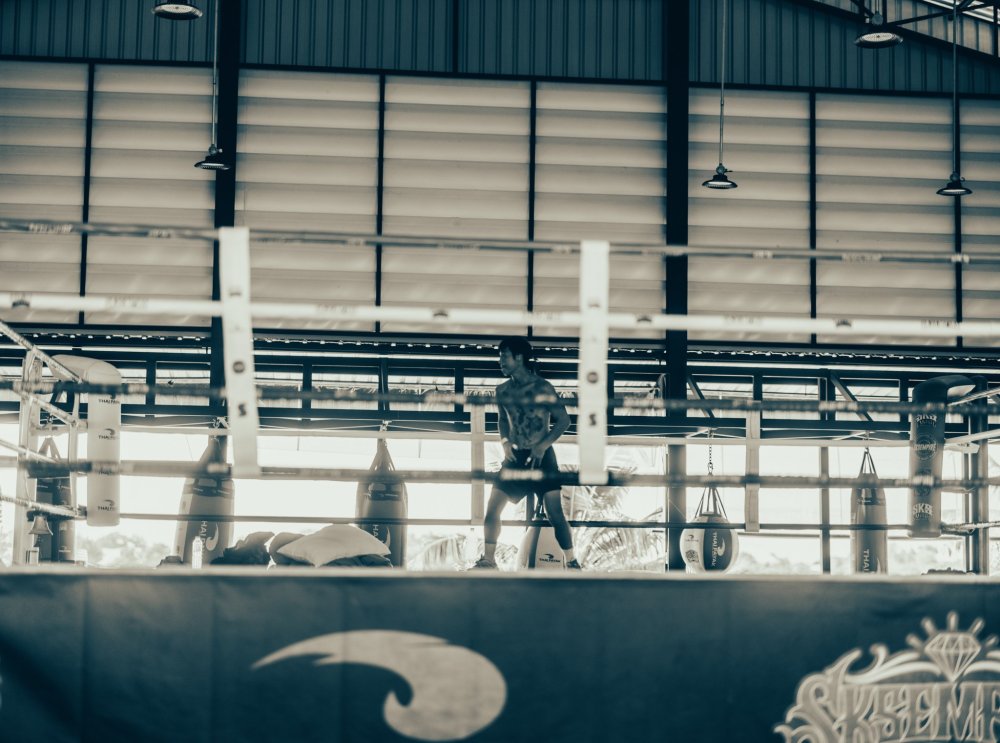




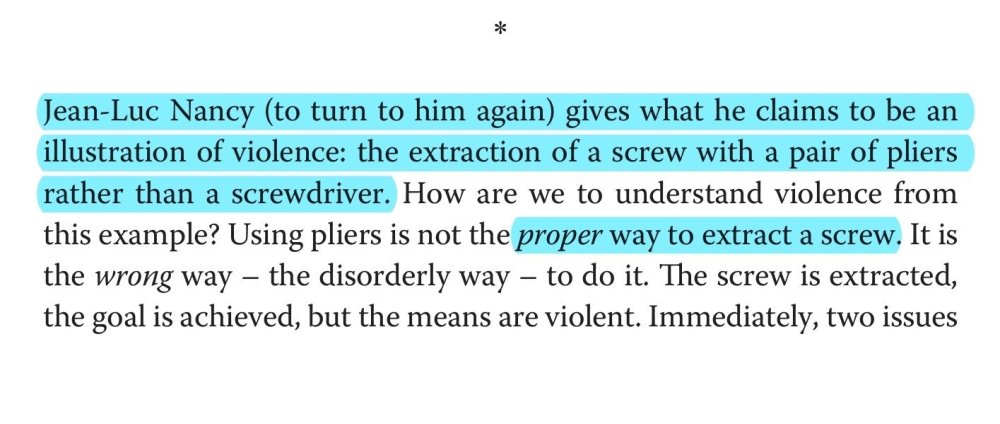

KetSriyapaitheMuayChaiyamasterofArjanSurat.thumb.jpg.63aca732ad49cbd647e506c3d9dd568e.jpg)
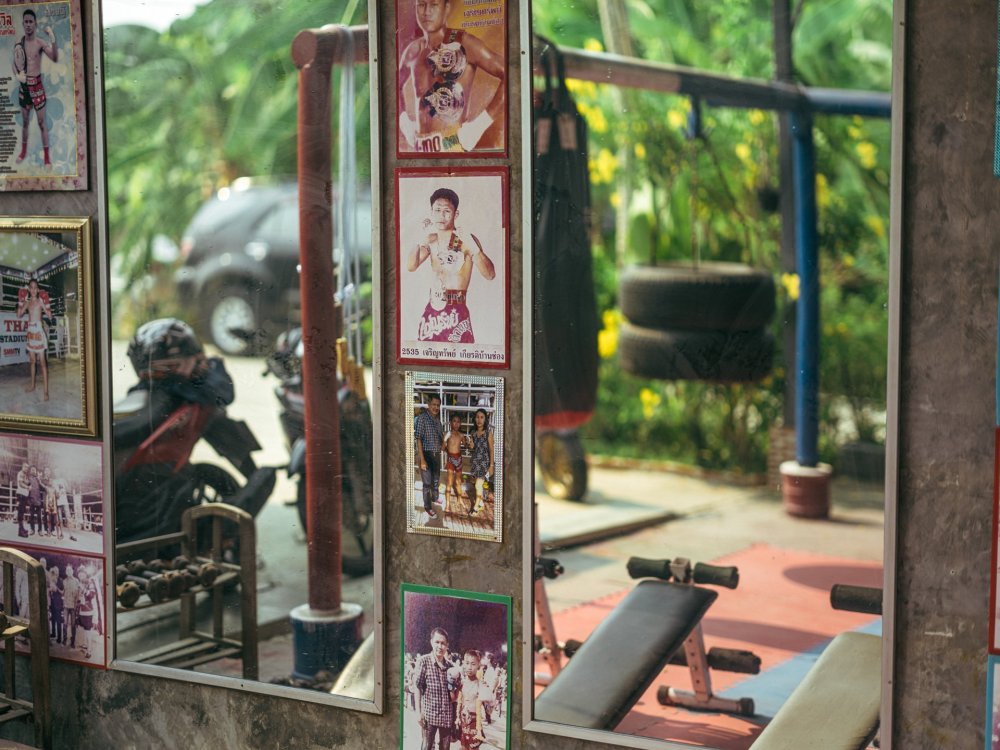


.thumb.jpg.22dda41f389708358121e4107f6eeb88.jpg)
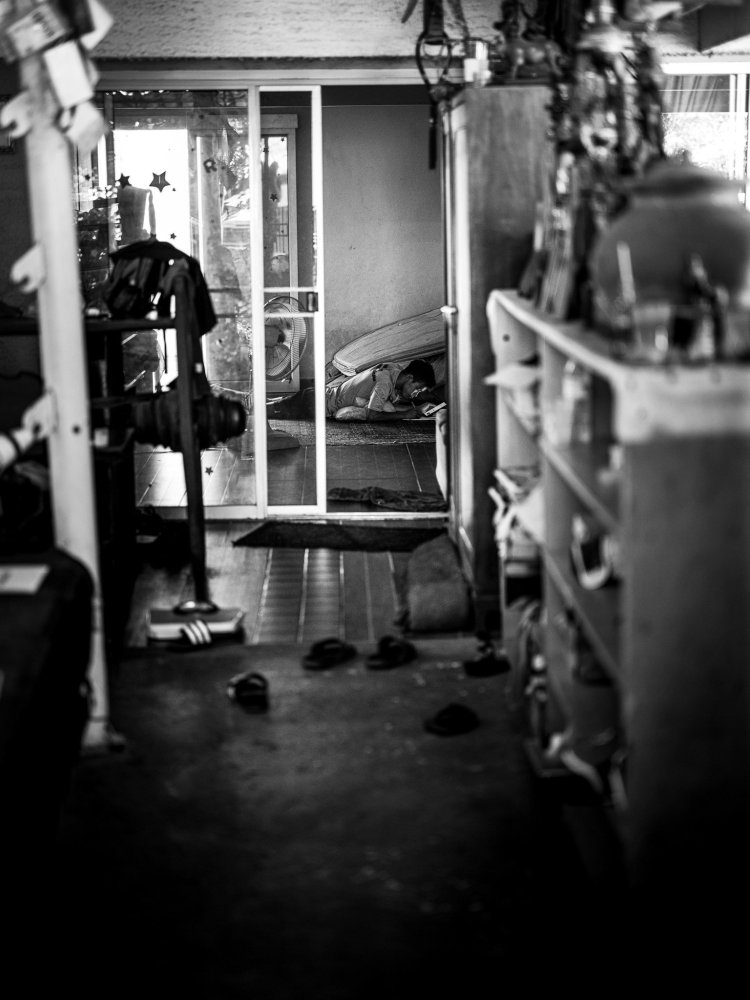
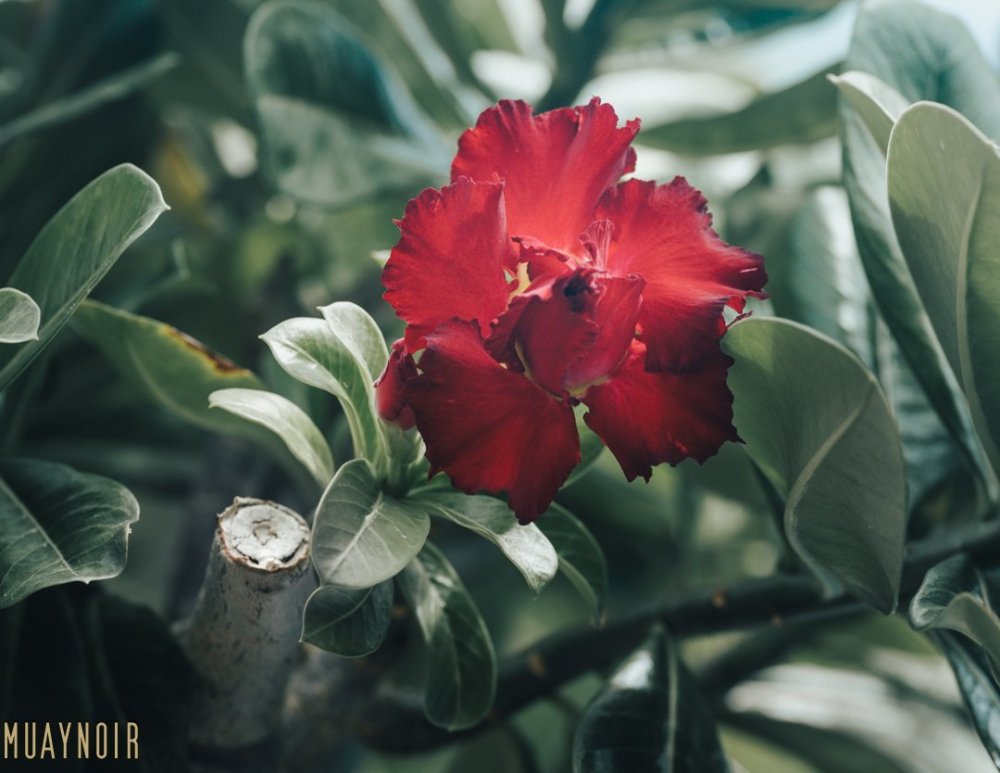
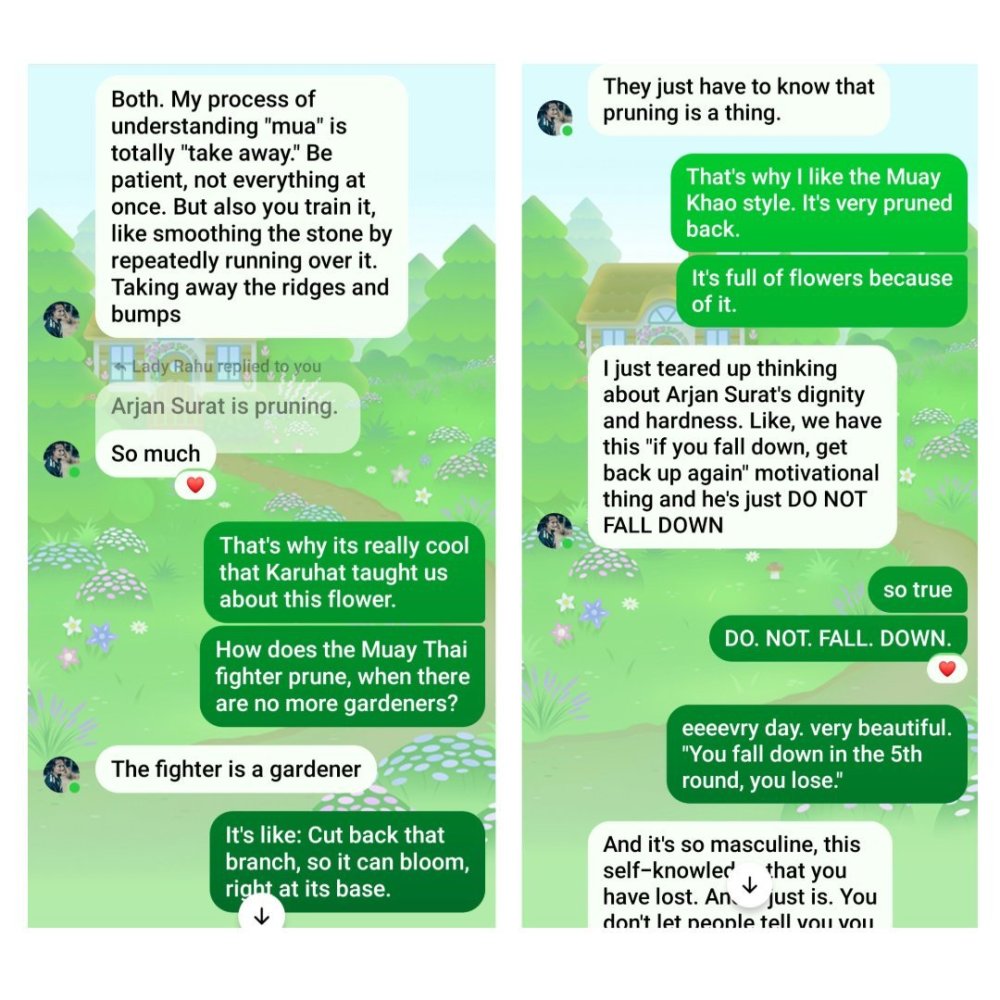
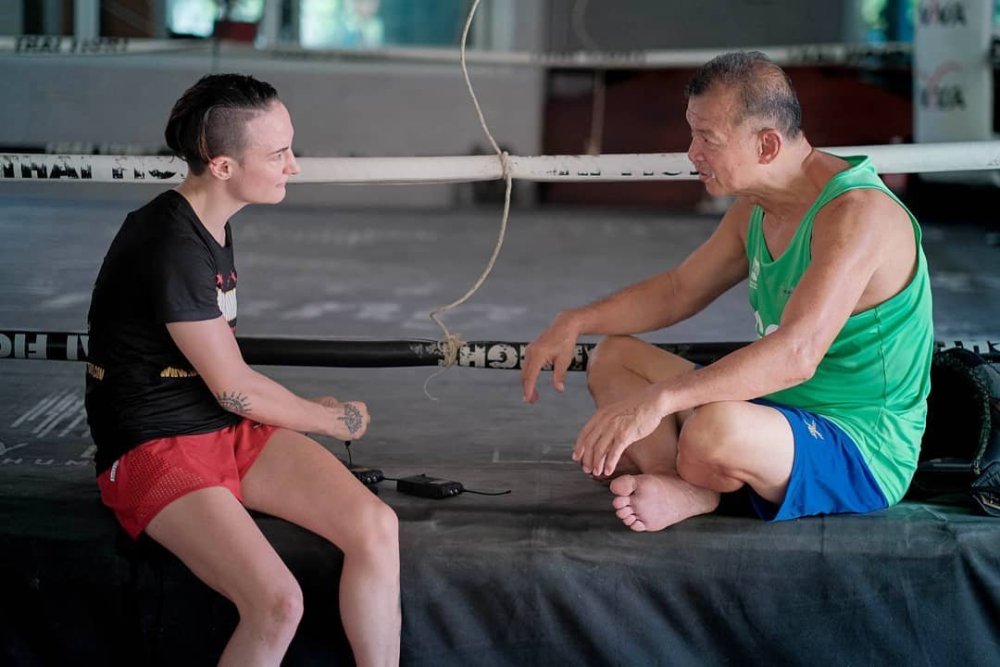
.thumb.jpeg.0922fa64b2c8ee30670c02f9602eca14.jpeg)

